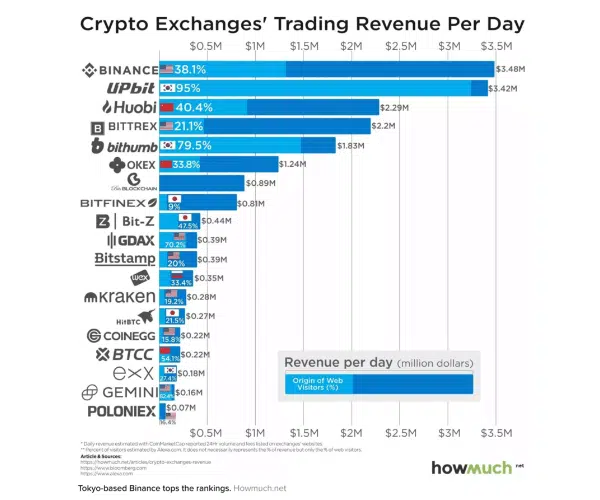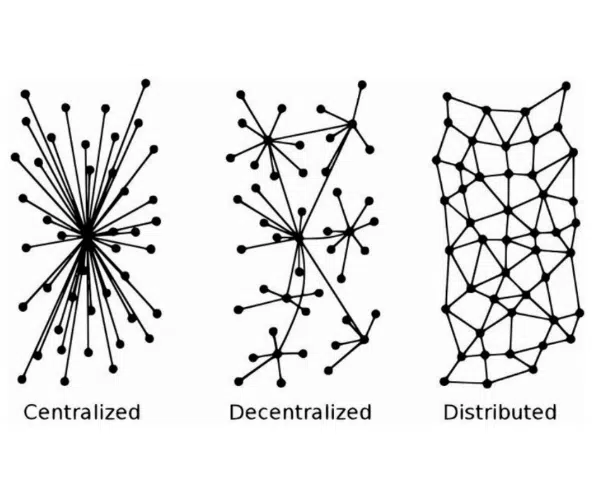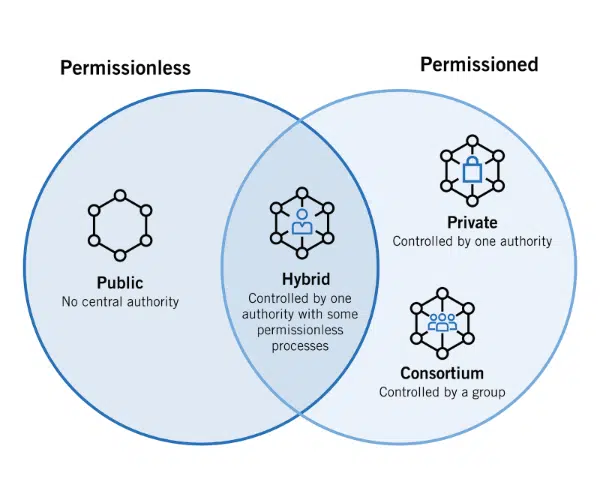
Blockchain technology has gained attention on a global scale over the last ten years. Users can trade cryptocurrencies worth millions of dollars online with just a few clicks and a few minutes of work. But who would have thought that the use of cryptocurrencies as collateral for US dollar loans would change financial systems?
Are cryptocurrencies becoming more popular? The figures show that the value of the global cryptocurrency market is currently projected to be USD 915.8 million. By the end of 2028, experts forecast readjusted revenue of USD 1125.8 million with a CAGR of 3.5% during the study period. The market is forecast to increase only in the US, rising from USD million in 2021 to USD million by 2028.
It indicates that the market is fast growing, encompassing both seasoned traders and beginners who want to utilize practical exchange services. As a result, more and more entrepreneurs are showing a strong interest in creating their own cryptocurrency. But what architecture does it adhere to? First, of course, you need to consider the cryptocurrency exchange architecture before you launch it.
A typical business owner could find software architecture frightening and too sophisticated. Without getting too technical, the topic is not significantly more terrifying than, say, considering the design of your home. The Cryptocurrency exchange architecture is significantly more complex than that of traditional exchanges. Due to scalability problems that arise as the number of users grows, this is why the majority of cryptocurrency exchange businesses fail at the halfway point.
What is Cryptocurrency Exchange Architecture?

Source: HowMuch.net
Let’s first gain some understanding of blockchain technology. A blockchain is logically defined as a network of blocks that are linked together and carry specific information (database) securely (peer-to-peer). In other words, blockchain is a collection of interconnected computers rather than a single, centralized server, making the entire network decentralized.
The blockchain idea might be likened to work completed using Google Docs to simplify it further. You may remember when doctors used to get tossed over. documents while awaiting the necessary modifications from other parties. Thanks to Google Docs, working on the same document at the same time is now possible.
Consensus and validation are two of the fundamental characteristics of blockchain technology. It is a novel technology because of this. It keeps the same structure across all nodes and is designed as a monetary system. A public blockchain system is neutral in that it does not depend on trust, in contrast to conventional ledgers managed by centralized organizations (such as banks). Anyone wishing to participate as a node can access a public blockchain full node client.
Blockchain is a collection of computers connected to one another rather than a centralized server. This indicates that the network is decentralized. You can see more information about the various types of networks in the figure below.

Source: ResearchGate
There are various consensus procedures, including
- Proof of Work (PoW)
- Proof of Stake (PoS)
- Delegated Proof of Stake (DPoS)
There are numerous potential blockchain projects due to the generalizability and flexibility of the architectural elements of transactions, blocks, mining, and consensus. The majority of these projects involve producing new cryptocurrencies (also known as alt-coins), although the variety of blockchain-related project ideas is fast expanding.
Components of Cryptocurrency Exchange Architecture
It can be difficult to analyze a blockchain’s exact components accurately and distinguish them from functional elements. Although that evaluation is not totally correct, nodes, transactions, blocks, miners, and cryptography are usually referred to as blockchain components. We’ll use this chance to talk about the four key parts of a blockchain so let’s get started.
Blocks: A “block header” is a sort of dataset that is used to store significant data. The user can confirm the neighborhood using this block header. This data kept inside is best described as
- An alternative to blocking
- The parent block’s version
- The amount of time required to create a block in bits
- Every transaction has a secure hash.
- nBits
The remaining transactions in the block are created during the data mining phase. In cryptocurrency exchange architecture, many blocks are present depending on their functionality.
Nodes: The blockchain is enormous! They keep a million records, too. These massive volumes of data are kept on nodes, which are the objects. Nodes include laptops, desktop computers, and large servers. In a cryptocurrency exchange architecture, every node is connected to every other node.
Nodes store a blockchain network’s whole history. Similar to attendance registers in schools, full nodes maintain an account of every transaction, including which blocks are being added and which are being replaced by new ones.
Transactions: The sender, recipient, and relevant values’ addresses are all included in transactions. After being compiled, transactions are distributed to all nodes included in the block. Every node processes every transaction separately.
The cryptocurrency exchange architecture is composed of this kind of ongoing data transfer. Each transaction will have a distinct input and output, which may be single or numerous items. The output adds up the money and the address, while the input is defined as the reference value from the prior transaction.
Mining: The way mining operates is the same as how credit card networks operate. Depending on its settings, each transaction that is now active waits in the queue before being re-checked. If the transaction is approved, it advances toward the relevant blocks and receives a green signal from the network.
In simple terms, here’s how blockchain with its components works in six steps,
- A node submits the transaction to the network.
- The transaction is picked up by miners, who store it in the memory pool.
- The transaction is added to the block by miners.
- Miners compete on the network to find the block’s hash after submitting the block (if consensus is based on a proof of work system).
- The block is sent to the network when the correct hash is discovered.
- Each node checks the hash, and if 51% of them agree that it is accurate, the network obtains agreement, and the block becomes unchangeable.
Various Types of Cryptocurrency Exchange Architecture Defined

Source: Foley & Lardner LLP
Blockchain technology benefits from decentralization, improved security, quick settlements, and immutability. Through bitcoin, the technology gained popularity. Private blockchain, public blockchain, hybrid blockchain, and consortium blockchain are the four basic types of cryptocurrency exchange architecture.
Public Blockchain
Public blockchains are entirely decentralized, permissionless, and open to everybody. Public blockchains allow all nodes to have equal access to the blockchain, the ability to add new blocks of data, and the ability to validate existing blocks of data.
Public blockchains are largely utilized nowadays for bitcoin mining and trading. Popular public blockchains like Bitcoin, Ethereum, and Litecoin may be familiar to you. The nodes “mine” for bitcoin on these open blockchains by constructing blocks for the network-requested transactions by resolving cryptographic puzzles.
Features
- A public blockchain is decentralized
- Generate transactional throughput
- More secure
- Needs grant access to supervise the whole network
Private Blockchain
A private blockchain is a partially decentralized system where access and control are restricted to a single organization. In other words, it is not accessible to the general public, and anyone who wishes to join it must request permission from the blockchain’s governing body.
Features
- Top-notch privacy
- High efficiency
- Stability
- Low-fee
Hybrid Blockchains
These blockchains are often managed by a single organization, with an oversight performance provided by a public blockchain. Together, they complete the transactions. Examples of hybrid blockchains include IBM Food Trust, which was created to increase the effectiveness of the entire food supply chain.
Features
- Operates within a closed ecosystem
- Transactions are cheap and fast
- Generates security and transparency
- Fully customized
Consortium Blockchain
A permission blockchain technology called consortium blockchain is managed by a number of different organizations. Therefore, it resembles the private blockchain quite a bit. However, contrary to consortium blockchain, which numerous organizations use, a private blockchain is solely used by one organization.
Instead of starting from scratch, consortium blockchain enables new users to join the existing framework and share information.
- Validation
- Control
- Economic
- Security
- Flexibility
To understand these types with ease, the following comparison table can help you.
| Property | Public Blockchain | Consortium Blockchain | Private Blockchain |
| Consensus determination | All miners | Selected nodes | Within one organization |
| Read permission | Public | Public or restricted | Public or restricted |
| Immutability level | Impossible to temper | Chanced to be tempered | Chances to be tempered |
| Efficiency | Low | High | High |
| Consensus process | Permissionless | Needs permission | Needs permission |
| Centralization | No | Partial | Yes |
This is all about Cryptocurrency exchange architecture. Of course, this was a theoretical part, but in order to understand the entire topic, it is always a better idea to go through when the technology really implements and what kind of benefits they get. Hence, before concluding the topic, let’s have a look at the applications of blockchain.
Applications of Blockchain
Blockchain is a technology that potentially improves the way many different industries operate. For example, real estate, healthcare, and finance are three industries where blockchain can be used.
Banking: Banks are particularly vulnerable to cyberattacks due to their centralized infrastructure. Blockchain technology can increase security in the banking sector. Blockchain technology can be used to preserve a digital record of transactions using smart contracts, and because the system is decentralized, it is less vulnerable to hackers.
Healthcare: Blockchain can be used to retain a patient’s medical history via a digital ledger system, changing traditional record-keeping methods. Other doctors can receive the information.
Smart contracts can also monitor a patient’s progress in real-time. As a result, it will cut down on the time needed for record-keeping. As a result, healthcare organizations like BurstIQ, Medicalchain, Factum, and Guardtime are embracing blockchain technology to improve patient care.
Real Estate: Without a doubt, the ledger blockchain system is reliable. It is the ideal technique to protect transactions. Some blockchain-based businesses that are merging the usage of blockchain to speed up transactions include Republic, SafeWire, Vairt, and Real IT.
KYC and AML: Blockchain technology can help with Know Your Customer (KYC) and Anti-Money Laundering (AML), two widely used procedures. Currently, each client must go through a time-consuming, multi-step KYC/AML process, which is expensive for financial institutions. By doing a KYC/AML check on a specific client only once and making the information public to all financial institutions, the blockchain could streamline this process while lowering costs and improving analysis and monitoring.
Key Takeaways
Blockchain technology has countless applications. There are numerous use cases for blockchain technology today. Learning a blockchain programming language and other blockchain developer abilities can make it simple for developers to construct new applications. It is a form of disruptive innovation that can offer answers not just for digital currencies but also for many other sectors.
Blockchain can be useful for voting systems and any industry that relies on record-keeping and needs a transparent solution. If you are a novice in the blockchain field and want to develop a product, hire blockchain developers from Elluminati, as they have a better understanding of today’s emerging technology with years of experience.










